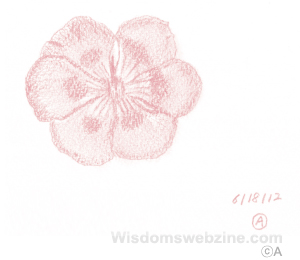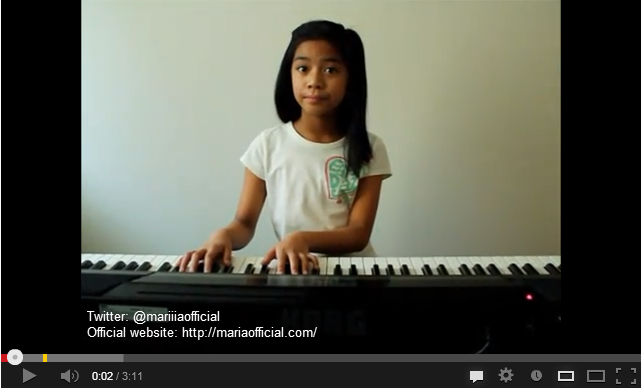I grew up with Miyazaki’s animations. I had laughter and also tears with Anne of Green Gables, ran to a TV and almost fell into it the moment the opening theme of Dog of Flanders began, and after I watched My Neighbor Totoro, I used to look around to find a Cat Bus that might appear from somewhere every time I walked a dark street. Some years later, I watched Spirited Away and wondered if I could travel to another world like Chihiro’s journey every time I drove unknown roads. The worlds and people in Miyazaki’s animations were not just animated images, but actually took a part in our life with us.
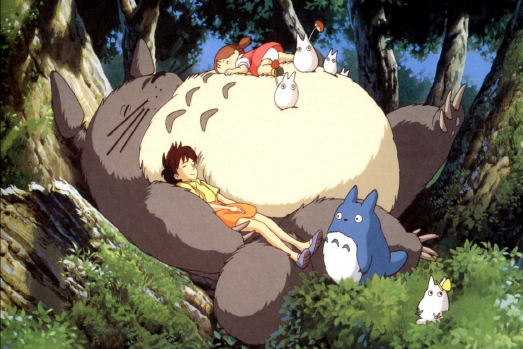
My Neighbor Totoro ⓒ Studio Ghibli
His human-interest storytelling, plain yet eye-catching selection of beautiful colors and mystical but friendly characters… Miyazaki always speaks about the harmony with nature and a community. He has been receiving a lot of love globally with a big group of fans and so massive sensation followed every time he released new work. Moreover, he once again proved himself a living legend by winning the Oscar at the 2002 Academy Awards.
Miyazaki has a simple but profound conviction. He says, “Hand drawing on paper is fundamental to animation.” Miyazaki’s conviction has been continuous without having broken ever since he got into Toei Animation Studio in 1963. Two-hour-long screens are compactly filled with colors and inimitable imagination-stimulating illustrations; they are too exquisite to believe that they are only hand-drawn. (Of course, he said he sometimes needed a little help from computer graphics.)
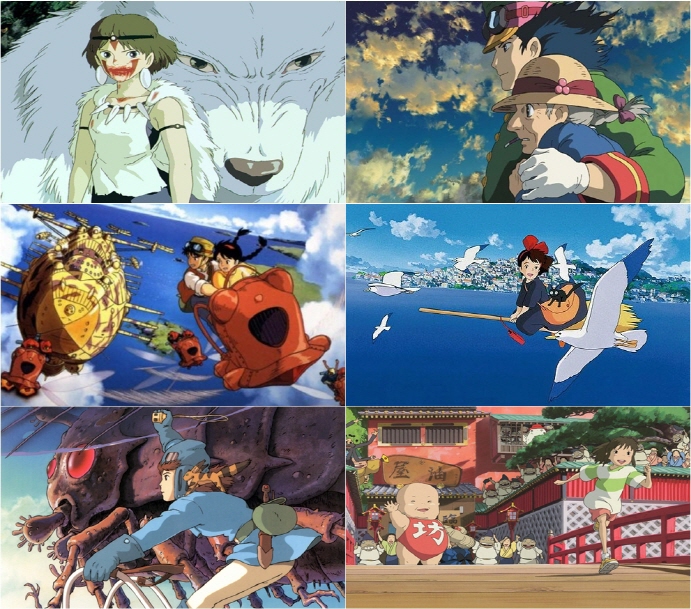
Clockwise from Left: Mononoke Hime, Howl’s Moving Castle, KiKi’s Delivery Service, Spirited Away, Nausicaä of the Valley of the Wind, Laputa: Castle In The Sky ⓒ Studio Ghibli
Many crews work together at Ghibli Studio. Countless masterpieces were created there, but their first start is always a piece of paper and a pencil. Miyazaki keeps the traditional way of producing animations; and it is called Cel Animation. Especially in Ghibli Studio, a Full Animation technique is employed where all of the motions over 24 frames (which come up to a second) are fully expressed on 24 pieces of paper. Considering an average running time to be 100 minutes, it is actually an enormous amount of work. For an instant second, they never miss any momentary flash human eyes can’t even detect and hand-draw every single detail on pieces of paper.
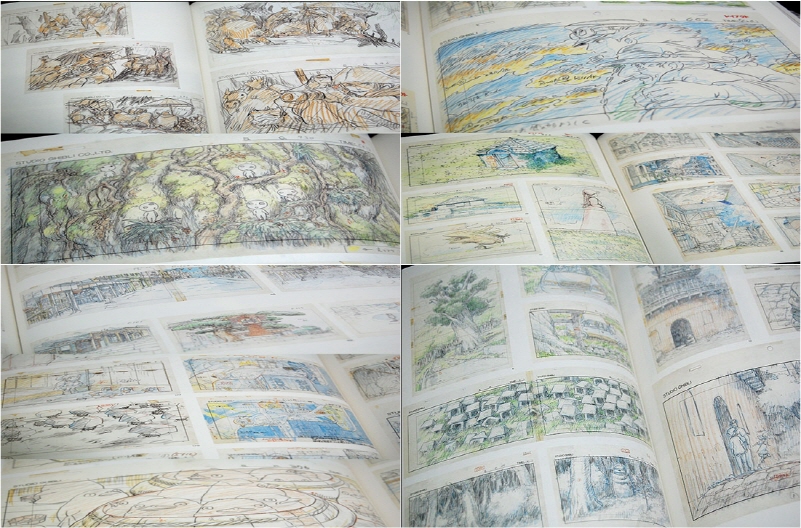
ⓒStudio Ghibli Layout Designs Exhibition Artbook
Once layouts and backgrounds are completed, they are colored in with watercolors. Their craftsmanship is intact even to a fraction of a second that inadvertently passes. Tetsuka Osamu a.k.a. a pioneer of hand-drawn Japanese animation wondered how long it would take to complete a 100-minute animation by hand-drawing alone, and actually drew cels by himself. He came up with a conclusion that it takes a total of 13 years to make a 100-minute animation.
Miyazaki’s biggest intention on animation production is to entertain kids, i.e. to make them happy. Only for kids’ innocence, he draws, with all his soul and energy, on millions of pieces of paper while keeping the fundamentals of animation deep in his mind. It is not a coincidence to compare him to an ant that silently completes any work it’s been given.
His animations, the outcomes of his ardent effort and heart, never fall behind even when competing with ‘modern’ animations heavily armed with 3D or the newest techniques. They rather stimulate the analog sentiment of many, and thus a deep impression and an after-effect remain long after in the viewers mind. His honest craftsmanship, like an ant, is entrenched in each of the scenes of his animations. Maybe that’s why his animations continue to transcend time.
Ask yourself, too, whether you have been doing your work diligently just like an ant does, even when no one sees you. Have you ever lived truthfully with all your heart?



